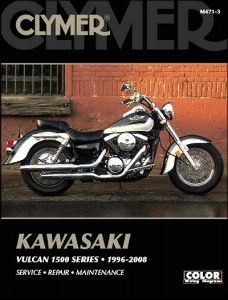
Author Archives: Jeff Hornok
Here are the 1995-2004 Toyota Tacoma top 5 tips that reduces repair costs and will give you great performance for the life of your vehicle. The first generation Toyota Tacoma is getting older and repairs are inevitable, however, the experience of owning one, if properly maintained, will extend the life of your vehicle. I have owned a few of them and put well over 300,000 miles on both, without any major repairs.
- Regular scheduled maintenance: According to ACTONTOYOTA.com for the 1995-2004 Toyota Tacoma, it gives you all the maintenance intervals which reduces repair costs, for every 5,000, 15,000 and 30,000 mile intervals. By following the scheduled maintenance intervals, you will eliminate costly repairs, like, the engine, transmission or drivetrain problems, which could lead into the thousands of $$$$$ in repairs.
- Parts can be expensive from the Toyota dealer and shopping other locations like AUTOPARTSWAREHOUSE.com or ROCKAUTO.com, can save you anywhere from 50-70% off of dealer pricing.
- Servicing your vehicle at a Toyota Dealership can be very expensive, so if you decide to do it yourself, a great place to start would be to have your own DIY repair manual by your side, which reduces repair costs. A great place to start is: The Motor Bookstore. By having the manual as your guide, the easy to read book and illustrations, makes it fun to work on any vehicle. The amount of savings, as well as the pride of doing it yourself, with this easy to follow manual, will pay off in the long run!!!
- Here are some tips on finding qualified, yet inexpensive mechanics: Research, locally, to see if they are ASE certified, any affiliation signs (AAA), ask local residents, check online reviews, investigate procedures online, check with taxi or limo drivers on who they recommend, and balance price with convenience. With all this information, it really helps to have the repair manual from THEMOTORBOOKSTORE.com, to not only gain knowledge and we all know knowledge is power, but to reduce the risk of being taken advantage of by a mechanic, which also reduces repair costs.
- The Toyota Tacoma is a very dependable vehicle and will last a lifetime, if treated correctly. By following all the information listed above, you should get great results, as well as maximum performance from your vehicle. Even though the service intervals do not say you should use a 100% synthetic oil, I personally use AMSOIL for the engine, transmission and differential. Other great synthetic oils are: ROYAL PURPLE and MOBIL 1. These are just a few more ideas that will extend the life of your vehicle and reduce repair costs even more.
All of the information listed here should be helpful and make your life a little easier by having more time to focus on other priorities. Having all the necessary knowledge and references, like the repair manual by our side, will help us to make informed decisions in the future. Whether you decide to do it yourself or have a mechanic do the work, you will have all the tools to do so. HAPPY MOTORING EVERYONE!!!!
The 1990-2002 Honda Accord timing belt replacement procedures are covered pretty thoroughly in this video, with very clear video on each step along the way. The video also covers the tools needed to make it as simple as possible to do. Although repairs are inevitable on this 6th generation Accord, especially the timing belt, you will get the most out of the vehicle by following the scheduled maintenance intervals, especially for the timing belt replacement.
Although the 1990-2002 Honda Accord video covers all 12 years of the model, the steps in the video should be the same for all the 6th generation engines and the different horsepower variations for the 2.3L, 2.9L and the 3.0 L Engines.
Some of the key tips on the Timing Belt Replacement Procedures are LINING UP THE TIMING MARKS ON BOTH THE CRANKSHAFT AND CAMSHAFT PULLEYS, AS WELL AS THE TENSIONERS BEING TIGHTENED AND THE BELT PLAY BEING JUST RIGHT.
The 1990-2002 Honda Accord timing belt replacement video is a great do-it yourself video, but it would not hurt to also have a Chilton or Haynes Manual nearby to as a reference to answer any of your questions, or go to The Motor Bookstore.
The suggested intervals for the 1990-2002 Honda Accord Timing Belt Replacement Procedures are anywhere from 60,000 miles (Severe driving conditions) to 80,000 miles (Normal driving conditions). From what others have said and past experience, the recommendation would be to change it at 60,000 miles, because the possibility of the belt being stretched, cracked or ready to break, will lead to the possibility of jumping timing, which can lead to internal damage like: Bending the valves, etc…. which will lead into costly repair $$$$$$. Here are some other references that might be of use: Honda-Tech Forum or http://www.driveaccord.net/forums/showthread.php?t=31379
The 1990-2002 Honda Timing Belt Replacement Procedure video seems to be very accurate and simplified, which will make it Easy enough for the beginner to do!!!
The Motor Bookstore conducted a thorough review of the Clymer M471-3 Kawasaki Vulcan 1500 Repair Manual: 1996-2008.
From 1996-2008 The Kawasaki Vulcan 1500 Series cycles were not only great performing cycles, but also very classy looking models during those years, and stands the test of time today.
The Kawasaki Vulcan 1500 Series, Classic, Drifter & Nomad Series 1996-2008 is an extensive Kawasaki Vulcan 1500 Series repair manual designed to make it as simplified as possible for your repair needs Clymer manuals once again proves why they are the top vehicle guidebook for repairs for any level of DO-IT-YOURSELF repair expertise, from basic maintenance, troubleshooting, to all major repairs.
The Kawasaki Vulcan 1500 Repair manual covers the Vulcan Classic D1-D2 (1996-1997), Vulcan Classic E1-E7 (1998-2004), Vulcan Classic N1-N8 (2000-2008), Vulcan Classic T6(2006), Vulcan Drifter J1-J2 (1999-2000), Vulcan Drifter R1-R5 (2001-2005), Vulcan Nomad G1,G1A,G2A,G3 (1998-2001) and the Vulcan Nomad L1-L5 (2000-2004). With easy to read colored wiring diagrams, to clearly labeled chapters, the layout makes it easy for anyone to navigate. The manual goes into detail on safety, tools, supplies, electric system fundamentals, storage, specifications, as well as step-by-step instructions on complete overhauls.
Chapter 2 of the Kawasaki Vulcan 1500 Series manual goes into troubleshooting, with all the basics included, so that even a beginner can follow. Even the most advanced repair person should not overlook this section. The chapter covers everything from the basic start up, to lubrication, maintenance and tuneups.
The Kawasaki Vulcan 1500 Series, Classic,Drifter & Nomad Series 1996-2008 chapters consist of: troubleshooting, maintenance, tuneup; Engine top end; Engine lower end, clutch and external shift mechanism, carburetor, electrical, cooling, etc….
The Kawasaki Vulcan 1500 Repair manual has perfectly labeled images, as well as detailed instructions. In chapter 7, they go into detail on how to assemble and disassemble the transmission and internal shift mechanism. With a beautifully laid out picture of every part inside the transmission, name of the part, and how to visually inspect them, it makes for a very manageable rebuild, if necessary.
The Kawasaki Vulcan 1500 Series, Classic, Drifter and Nomad Series 1996-2008 is a Clymer Manual. The 1996-2008 Vulcan Service manual is one of many great Clymer manuals, from motorcycles to ATV’S, Tractors, and Snowmobiles. Clymer manuals are not only affordable, but will make your life so much easier. For a small fee, they offer unlimited access to over 500 manuals, and are constantly adding more.

 Shop Store
Shop Store













